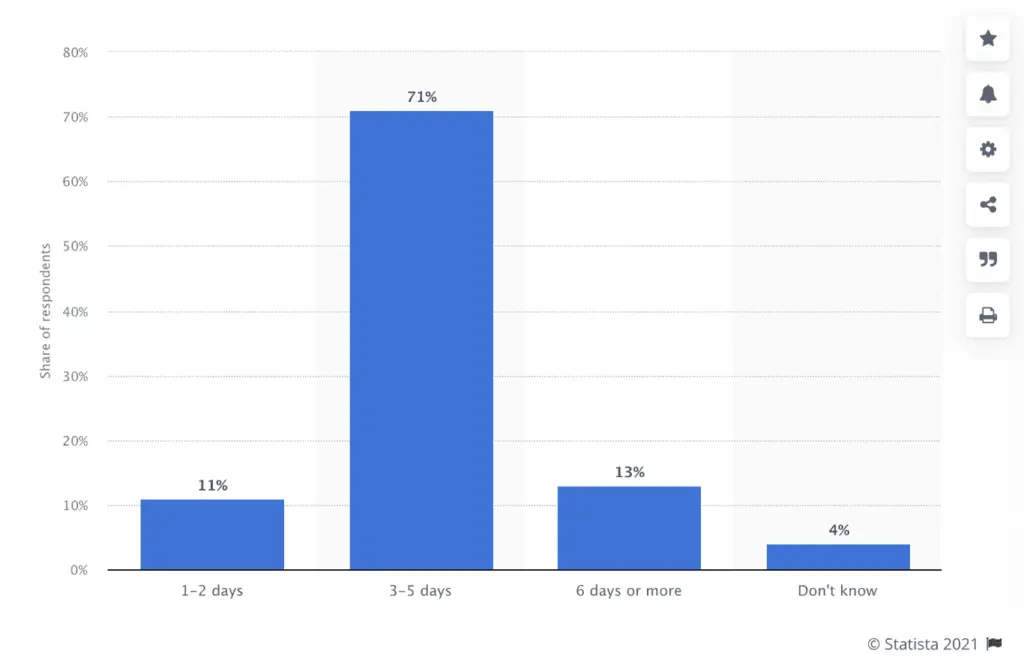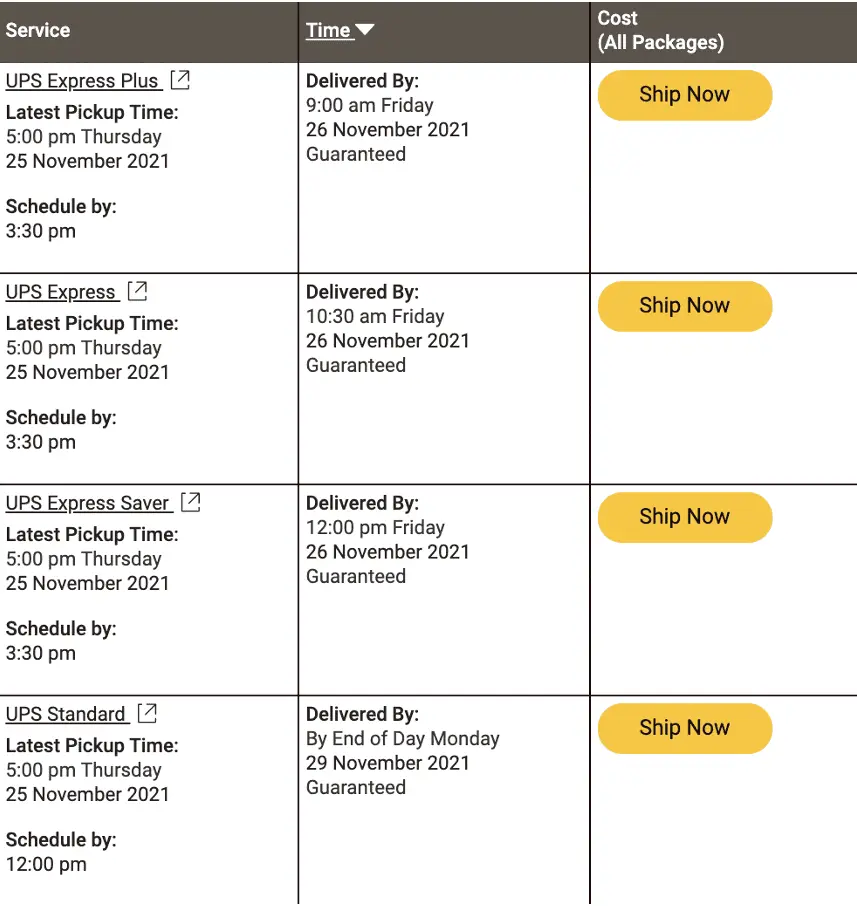How to tackle the UK shipping crisis for successful January Sales
Many issues have compounded to create one of the worst delivery crises in modern history.
Delays caused by a lack of truck drivers and delivery staff who were stricken with Covid, along with Brexit-induced red tape, have all led to a nightmare before Christmas.
It’s not the best time of year for it to happen, but since shipping delays are affecting much of the world, your customers likely already know what’s going on—and why it’s happening.
This is a pivotal time for your ecommerce brand to show up and give your customers the best possible experience, given the circumstances. The goal is to ultimately secure long-term relationships with seasonal shoppers to create customers that shop not just during the Christmas rush and the January sales, but all year round.
How to have a successful Christmas and January sales season
With much of the holiday shopping already underway, you might not have time to change the fate of orders that are already delayed. Some products will be delivered on time, and others will be at the mercy of shipping delays.
But here’s what you do have control of: Managing customer relationships and setting your business up for success during the January sales. Once the turkey has been demolished, millions of shoppers will be waiting for the deals to drop at midnight on Boxing Day.
Here are three tips to help you manage shipping delays in the UK while providing your customers with a stellar experience.
1 | Effectively communicate shipping delays
Most consumers know there are issues with deliveries this season, so it won’t be a major surprise to them. However, it will be a major surprise if you keep them guessing about when their order is going to arrive.
Here’s how you can keep customers in the loop with consistent and transparent information about their orders:
Don’t leave your customer hanging
Start by identifying if there are any helpful moments in your customers’ experience where you can provide reassurance during the shipping process.
While you might already have a template for an order confirmation email and a dispatch email, it’s worth testing additional messages. Use data to make the decision if it’s necessary to add more communications to your shipping sequence. You can use feedback from customer support channels, any messages customers send to the brand, and engagement with emails that have been added in to determine whether you should expand your email communications—or not. If people are clicking on the additional emails, you can assume that it’s a helpful email, and you can add it across more of your transactional flows.
You can also add an email that provides a tentative delivery date after the order confirmation—just make sure that it reminds shoppers that delivery dates are subject to change). You can also send another email after the item has been dispatched to reassure your customer that it’s on the way. Embedding a tracking code will give customers the power to oversee the entire delivery process on their own terms.
This shipping delay email from Oak Furniture Superstore came from a real person. Mali Mobbs, a service representative, updated the customer as soon as there was an issue with shipping. In the meantime, Oak Furniture held off on sending promotional emails while the order was in transit.

Avoid excessive communication
While regular communication throughout the shipping process is crucial, it’s important to be mindful of what you’re sending.
Shoppers don’t want excessive communication that’s not about their delayed item—especially if they’re a first-time buyer. An unhappy customer is unlikely to buy another product from you if they’re unsure that their previous purchase will arrive in time. This isn’t the time for promotional emails—instead, it’s a chance to foster a personal connection with a new shopper.
2 | Set up better shipping practices
Most UK consumers expect purchases to arrive within three to five days of purchase. With shipping delays projected to last for at least several more months, there are bound to be some unhappy holiday shoppers.
Implementing more reliable shipping practices is critical if you want to survive with your customer relationships intact.

Analyze inventory and stock levels
It can be easy to lose track of what you have in stock during the busiest time of the year. Products can fly off the digital shelves in a matter of minutes, which can make communicating wait times with your customers even trickier.
The first step in improving the fulfillment process is diligently monitoring your inventory and managing stock levels. Pull data from BFCM and Christmas sales to identify your bestsellers and ensure that you’re well-stocked for the January sales.
The last thing you want is for your customers to have to wait for their items to be shipped because you’ve run out of stock. If you’ve already run out of stock on some items, make sure that your customers are able to sign up so they’ll be notified when the item’s back in stock.
Leverage local fulfillment centers
To reduce shipping costs and speed up transit time, consider keeping your inventory in multiple fulfillment centers across the UK and other key locations.
The size of your company and the location of where the majority of your customers live will determine how many fulfillment centers you need.
If a package has to travel from the UK across Brexit borders and through customs, there’s a good chance it will be delayed this season. Brexit has made it more difficult to ship to EU locations and vice versa, as there are now multiple hoops you have to jump through with customs in other countries. For example, if you have a large customer base in Germany or Spain, you may want to consider a local fulfillment center in those locations rather than relying on shipping from a UK warehouse.
It’s worth comparing the shipping times and costs of different providers to see how long it will take for items to be delivered. UPS has an option to compare shipping times with its different levels of services.

UPS has a range of delivery times for shipping from within the UK, from four days using their standard service and overnight using Express Plus.
Book international shipments in advance and fill your shipment container
If you regularly see an influx of sales from a particular overseas destination, consider booking international shipments in advance to avoid any extra delays.
You can reserve an empty shipping container from a carrier and then transport it to your warehouse to fill it up with stock. Then, the shipping container can be transferred back to the carrier for shipment. This ensures that you won’t be shipping half-empty containers.
This can be especially useful if you regularly ship to EU destinations. Brexit regulations have made passing through customs more difficult, and that combined with shipping delays can lead to a significant wait time for your customers.
Booking shipments in advance means that you’re not scrambling at the last minute, trying to secure a container for shipment. And when you’ve secured your container, make sure to try and fill it up to get the most bang for your buck.
Diversify your supply chain
It’s not just shipping that’s been a huge headache for UK ecommerce brands. The whole supply chain has been disrupted thanks to a lack of workers and a struggle to get materials.
Diversifying your supply chain can help avoid these extra delays. Use different manufacturers and suppliers to maximize your access to materials.
For example, one manufacturer might be facing their own delivery issues, while smaller suppliers might have no problems at all. Expanding your supply chain to include different options can help you fulfill orders—and ship them to your customers quickly.
Clear and concise shipping copy
At least half (53%) of all shoppers won’t make a purchase if they don’t know when the product will be delivered. Again, consumers crave transparency when they’re buying online—especially if they’re making a purchase from a brand for the first time.
Providing clear, concise, and—most importantly—up-to-date shipping information on your website and other channels demonstrates that you understand your customers’ needs. It also arms potential buyers with the details they need to make a decision, all while building much-needed trust.
For Ooni, the boom in pizza oven sales during the pandemic caused a welcome spike in revenue—but it put a significant amount of pressure on their supply chain.

During lockdown, the Ooni’s warehouses were often delayed up to 21 days compared with their usual same or next-day shipping.
“We had challenges with stock and the demand was so high that our messaging had to change from ‘buy now’ to ‘get in the queue,’ because everyone wants these ovens,” laughs Angie Pilkington, email marketing manager at Ooni. “Managing that message was quite the challenge, and we had to pivot as quickly as we could.”
After pivoting their communication and CRM strategy and sharing updated shipping information on their website and social channels, Ooni increased their sales by 650%.
3 | Delight shoppers during the January sales
Despite the shipping woes ravaging ecommerce right now, there are still plenty of ways you can delight shoppers during the upcoming January sales.
Offer better deals
A bargain can soften the blow of lengthy delivery times. While a customer might not be willing to wait two weeks for a 10% discount, they might be fine with waiting for a couple of weeks if they can score a 25% price cut. Obviously, you don’t want to hurt your bottom line—but if these customers might go elsewhere, it’s worth slashing prices in order to seal the deal.
Learn from Christmas and Black Friday Cyber Monday (BFCM)
You’ve just experienced one of the busiest shopping seasons of the year during the middle of an international shipping crisis. On the upside, you should now have a huge amount of data that you can use to optimize your communications in January.
Ask yourself:
- What worked particularly well during BFCM and the Christmas rush? Did additional shipping emails lead to increased engagement? Or, did offering free delivery soften the blow of long wait times?
- What didn’t work? Did you over promise to customers and leave them disappointed? Did you fail to order enough stock which caused even lengthier shipping delays?
- What could you do better for the January sales? Adding additional touchpoints to the shipping process might give customers peace of mind. Another good strategy is to promote items that are well-stocked.
Put stellar customer support in place
Shipageddon might be here for a while and your customers may have questions, worries, and objections. If you want to secure their loyalty and keep them coming back after the January sales—it’s important that you establish a good customer support system.
Shoppers should be able to reach out to you and get an instant reply, whether it’s through an automated chatbot or a real-life human. You might also want to have resources available on your website that customers can find easily to answer their questions.
Don’t let shipping issues affect your January Sales
Experts predict that the UK shipping crisis may last at least another nine months.
The Christmas shopping season and January sales are one of the most important times of the year for ecommerce brands in the UK. It’s an opportunity to secure new customers and convert them into long-term fans. Establish trust by adapting to your customer’s needs. Create new systems to deal with the challenges of shipping delays. If your shoppers are experiencing shipping delays around BFCM and before Christmas, you can make the situation right by clearly communicating about the situation. Take this opportunity to delight your customers during the January sales with fast communication, special deals, and transparency.
Start using a multi-channel platform to send emails and set up automations

Related content

See how Customer Hub, Customer Agent, and Helpdesk powered faster support, reduced tickets, and boosted revenue during Klaviyo Service’s first BFCM.

Post-purchase experiences are where customer loyalty begins. Learn how to automate and personalize them to grow your B2C brand

Discover how lifecycle marketing transforms your CRM into a growth engine, driving retention, automation, and personalized B2C customer experiences.